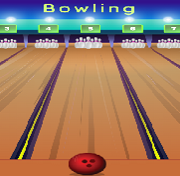Porpoises vs. Dolphins, Science Game for kids
Learn more about the differences between porpoises and dolphins by playing this science game.
Porpoises Vs Dolphins
Porpoises and dolphins are two of the most diminutive and corpulent marine mammals. There are many differences between porpoises, dolphins and porpoises. Porpoises are not able to interact with people, but dolphins can be social creatures. This article will show you how to tell the difference. First, porpoises and dolphins are more geographically distributed than porpoises. Second, dall's porpoises tend to have longer pectoral fins.
Differences between Harbour and Dall's porpoise
They share a common North Pacific habitat, but Dall's and Harbour porpoises can be found in separate areas. Dall's porpoises are distinguished by their striking black-and-white patterns and distinctive white blazes on their dorsal Fins. People who aren't familiar with the differences between these two species can be confused if they don't know what to look for.
The largest species of porpoise, the Dall's porpoise, is also the only one of its genus. They are active and social, and can be identified by the distinctive white spot on their stomachs and behind flippers. They are large and have only one predator, the Transient killer whale.
Similar habits are shared by Harbours and Dall's porpoises. Although Harbour porpoises are less likely than others to approach boats or breach the surface, they will sometimes come up to the tide line to feed. They are not known to approach boats but they will occasionally "surf" alongside vessels. This behavior may be related to their social structure.
Dall's porpoises swim faster than Harbour porpoises
Harbour porpoises can swim slower than Dall's but are much more agile. These speed demons can be mistaken for harbour porpoises and baby killer whales. Although they are less common in the Salish Sea than their cousins, they are still extremely fast.
The sexual maturity of the male Dall is between four and five years, and six to seven for the female. One calf is born to Dall's porpoises each year during their reproductive season. The average length of calves is three to four feet. A single calves can be born by a female as early as five months. The calf can also stay with its mother for nine months. Dall's Porpoises can live up to 22 years. They are attracted to warm, temperate, or boreal water, as well as deep, offshore, and oceanic waters.
The Dall's Porpoise is one of the fastest cetaceans. It can swim at speeds of up to 35 mph and leave a "rooster tail” at the surface. They ride on the bow waves of boats and seldom come near shore. Dall's porpoises can swim faster than Harbour porpoises, but they are also more gentle and timid around boats.
Harbour porpoises are less widespread than Dall's porpoises.
The geographic ranges of Dall's porpoises and the harbor are different. The latter species spends its time close to shore and has a range that extends as far north, as West Greenland. However, Hudson Bay is home to the former. They are found only in coastal waters of the Northern Hemisphere. The Arctic is home to the latter.
Both Dall's and harbor porpoises are found in coastal waters. They are usually seen in small groups of 3-8 animals. However, the former can be seen either alone or in pairs. Although large aggregations of 50-100 animals have been seen, this is not an everyday sight. These creatures are smaller than most and less likely to approach people or boats. However, they can swim close to the shore sometimes.
Harbor and Dall's Porpoises have the same food sources, despite being in a smaller geographical area. Their diets are similar with Walleye pollock and Pacific herring being their main food sources. Their geographical ranges and seasonal distributions can change, which could make them more or less dependent upon each other's habitats. There are many differences among the two species so it is important not to confuse them.
Dall's porpoises are larger in pectoral fin
Both dolphins and Dall’s porpoises have long pectoral fins. Dolphins also have a triangular dorsal Fin. Both have similar gray-brown bodies, but dolphins have a longer pectoral fin. Dall's porpoises have similar coloring with prominent white flank patches and white-tipped tail flukes. Dall's porpoises are only found in the north Pacific or southwestern Atlantic and can weigh up to 400 lbs.
The Dall's Porpoise, which can swim at speeds of up to 35 mph, is the fastest small cetacean. When it is on the surface, it creates a distinctive "rooster tail". They are also known to ride bow waves on fishing boats. These animals prefer deep water and rarely venture near shore. Unfortunately, Japanese fishermen often catch and kill them, and their population is decreasing.









